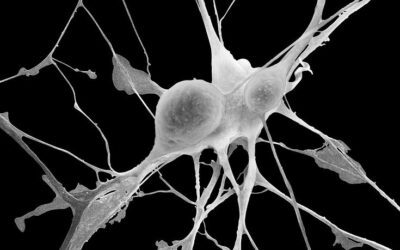Can Therapy Treat Dysautonomia and Hypermobility?
Dysautonomia and hypermobility conditions, such as Postural Orthostatic Tachycardia Syndrome (POTS) and Ehlers-Danlos Syndrome (EDS), represent a spectrum of complex, often overlapping disorders that challenge our understanding of the mind-body connection (Hakim et al., 2021). These conditions, which affect the autonomic nervous system and connective tissues, respectively, can have a profound impact on an individual’s physical, emotional, and social well-being (Armenteros et al., 2021).
The Autonomic Nervous System: A Delicate Balance
To fully grasp the implications of dysautonomia, it is essential to understand the central role of the autonomic nervous system (ANS) in regulating vital bodily functions. As neuroscientist Stephen Porges (2011) explains in his Polyvagal Theory, the ANS is a complex, hierarchical system that mediates our physiological responses to stress and social engagement.
Dysautonomia occurs when this delicate balance is disrupted, leading to a wide range of symptoms, such as dizziness, fainting, rapid heartbeat, and digestive issues (Fedorowski, 2019). The unpredictable and often debilitating nature of these symptoms can create a sense of chronic stress and anxiety, as the body struggles to maintain homeostasis in the face of ongoing challenges.
Hypermobility: The Mind-Body Connection
Hypermobility conditions, such as EDS, add another layer of complexity to the picture. These disorders, which affect the connective tissues that provide support and stability to the body, can lead to a range of musculoskeletal symptoms, such as joint pain, instability, and frequent dislocations (Tinkle et al., 2017).
However, the impact of hypermobility extends far beyond the physical realm. As psychologist Jessica Eccles (2015) notes, individuals with hypermobility often experience heightened levels of anxiety, sensory sensitivity, and emotional reactivity. This mind-body connection can be understood through the lens of embodied cognition, which emphasizes the role of bodily experiences in shaping our thoughts, feelings, and perceptions (Gallagher, 2005).
The Challenges of Diagnosis and Treatment
One of the most significant challenges in managing dysautonomia and hypermobility is the complex and often elusive nature of these conditions. As Raj et al. (2021) point out, the symptoms of dysautonomia can mimic those of many other disorders, leading to frequent misdiagnosis and delayed treatment.
Similarly, hypermobility conditions are often underdiagnosed or misunderstood, as the symptoms can vary widely from person to person and may not always be visible to others (Castori et al., 2020). This lack of recognition can lead to feelings of frustration, isolation, and self-doubt, as individuals struggle to find validation and support for their experiences.
Therapeutic Approaches: A Multidisciplinary Perspective
Given the complex nature of dysautonomia and hypermobility, effective treatment often requires a multidisciplinary, integrative approach that addresses both the physical and psychological aspects of these conditions. Physical therapy, occupational therapy, and cardiovascular exercise can help improve strength, stability, and overall functioning (Malfait et al., 2021).
Cognitive-behavioral therapy (CBT) and other psychotherapeutic approaches can be valuable tools for managing the emotional and cognitive challenges associated with these conditions (O’Sullivan & McCormick, 2020). By developing coping strategies, challenging negative thought patterns, and cultivating self-compassion, individuals can learn to navigate the ups and downs of their symptoms with greater resilience and adaptability.
Mindfulness and body-based practices, such as yoga and meditation, can also be powerful allies in the healing process (Kold et al., 2021). By fostering a deeper sense of body awareness and emotional regulation, these practices can help individuals develop a more harmonious relationship with their bodies and their symptoms.
The Importance of Social Support
Living with dysautonomia and hypermobility can be an isolating experience, as the invisible nature of these conditions can make it difficult for others to understand or empathize with the challenges faced by those affected. However, social support is a critical component of managing these conditions and promoting overall well-being (Kole & Chandler, 2020).
As sociologist Brenda Malobee (2016) notes, connecting with others who share similar experiences can provide a sense of validation, belonging, and empowerment. Online communities, support groups, and advocacy organizations can be valuable resources for individuals seeking to build a network of understanding and support.
Looking Forward: Research and Advocacy
As our understanding of dysautonomia and hypermobility continues to evolve, ongoing research and advocacy efforts are essential for improving diagnosis, treatment, and quality of life for those affected. Organizations such as Dysautonomia International and the Ehlers-Danlos Society are at the forefront of these efforts, working to raise awareness, fund research, and provide resources and support for individuals and families (Hakim et al., 2021).
Living with Dysautonomia
Dysautonomia and hypermobility are complex, multifaceted conditions that require a nuanced, integrative approach to understanding and treatment. By recognizing the intricate interplay between the physical, psychological, and social dimensions of these disorders, we can develop more compassionate, effective strategies for supporting individuals in their healing journeys.
Ultimately, living well with dysautonomia and hypermobility is a deeply personal process, shaped by each individual’s unique strengths, challenges, and resources. By honoring the complexity of these experiences and providing a supportive, empowering framework for growth and adaptation, we can help individuals navigate the winding path of chronic illness with greater resilience, self-awareness, and hope.
To treat dysautonomia or hypermobility conditions in Alabama, please contact Pamela Hayes at [email protected].
References
Armenteros, M., Sánchez-García, S., & Mora-Encinas, J. P. (2021). Psychosocial functioning in patients with Ehlers-Danlos syndromes. Rheumatology International, 41(8), 1429-1437.
Castori, M., Hakim, A., Malfait, F., & Francomano, C. A. (2020). The multifaceted complexity of Ehlers-Danlos syndromes. Nature Reviews Rheumatology, 16(10), 561-562.
Eccles, J. A. (2015). The relationship between joint hypermobility and psychological distress: An investigation into the role of joint hypermobility as a risk factor for psychological distress in a non-clinical population. University of Sussex.
Fedorowski, A. (2019). Postural orthostatic tachycardia syndrome: Clinical presentation, aetiology, and management. Journal of Internal Medicine








0 Comments